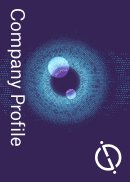On Monday, 3 June at the American Society of Clinical Oncology (ASCO) annual meeting, Merus shared interim results from the Phase I/II trial (NCT03526835) comparing its “first-in-class” petosemtamab, a bispecific monoclonal antibody targeting EGFR and LGR5, in combination with MSD’s Keytruda (pembrolizumab), against Keytruda alone in first-line recurrent/metastatic (r/m) head and neck squamous cell carcinoma (HNSCC).
Up to 80-90% of HNSCC tumours overexpress EGFR or harbour EGFR mutations. In March 2024, the US Food and Drug Administration (FDA) granted petosemtamab a breakthrough therapy designation. The combination therapy is also currently in Phase I/II trials as a second-line treatment amongst other uses in multiple solid tumours including HNSCC and non-small cell lung cancer. The standard of care first-line treatment for HNSCC is treatment with Keytruda with or without chemotherapy, while in the second-line it is chemotherapy with or without Eli Lilly’s Erbitux (cetuximab), an EGFR-directed antibody.
The Phase I/II trial enrolled 45 patients, of which 24 were analysed before the data cutoff date. Of the 24 patients analysed, 16 patients responded to the treatment, demonstrating a 67% objective response rate (ORR) and of the 16 responders, 14 people continued with the therapy after the cutoff date. Responses were consistent across cancers related to HPV and unrelated to HPV as well as consistent regardless of PD-L1 composite score. This compared favourably to the Phase III KEYNOTE-048 study (NCT02358031), which tested Keytruda alone or Keytruda with chemotherapy in a similar patient population, in which the ORR was 23.3% and 43.7%, respectively. Furthermore, in Merus’ trial, 40% of patients experienced grade 3 or higher adverse events (AEs), but only two patients (4%) discontinued treatment due to treatment-related AEs. In KEYNOTE-048, grade 3 and above AEs were reported in 17.0% of the Keytuda alone arm and in 71.7% of the Keytuda and chemotherapy arm. Merus plans to commence a Phase III registrational trial in mid-2024 for the second-line treatment of HNSCC and beyond, with a Phase III registrational trial in first-line HNSCC planned to start by the end of the year.
Petosemtamab’s novel therapeutic mechanism, using dual targeting of the EGFR pathway, has a chance to shake up the treatment of EGFR-mutated cancer. Erbitux currently dominates second-line HNSCC, which has a high rate of EGFR mutation but will likely lose a share of the market to petosemtamab if approved in second-line and beyond. However, there are much greater gains to be made in the first line, and Merus’ combination with Keytruda could provide much better clinical efficacy and safety outcomes compared to Erbitux. HNSCC is not the only indication petosemtamab can make waves in, as EGFR mutated NSCLC is a significant market currently dominated by AstraZeneca’s Tagrisso (osimertinib), an EGFR targeting tyrosine kinase inhibitor (TKI). It is possible that petosemtamab could move into the same line of therapy and compete with Tagrisso or provide a potential partner in a strong anti-EGFR mutant combination.
Access the most comprehensive Company Profiles
on the market, powered by GlobalData. Save hours of research. Gain competitive edge.

Company Profile – free
sample
Your download email will arrive shortly
We are confident about the
unique
quality of our Company Profiles. However, we want you to make the most
beneficial
decision for your business, so we offer a free sample that you can download by
submitting the below form
By GlobalData
<!–
–>
Visit our Privacy Policy for more information about our services, how we may use, process and share your personal data, including information of your rights in respect of your personal data and how you can unsubscribe from future marketing communications. Our services are intended for corporate subscribers and you warrant that the email address submitted is your corporate email address.
- SEO Powered Content & PR Distribution. Get Amplified Today.
- PlatoData.Network Vertical Generative Ai. Empower Yourself. Access Here.
- PlatoAiStream. Web3 Intelligence. Knowledge Amplified. Access Here.
- PlatoESG. Carbon, CleanTech, Energy, Environment, Solar, Waste Management. Access Here.
- PlatoHealth. Biotech and Clinical Trials Intelligence. Access Here.
- Source: https://www.clinicaltrialsarena.com/analyst-comment/asco-2024-merus-charges-ahead-with-positive-hnscc-results-2/
